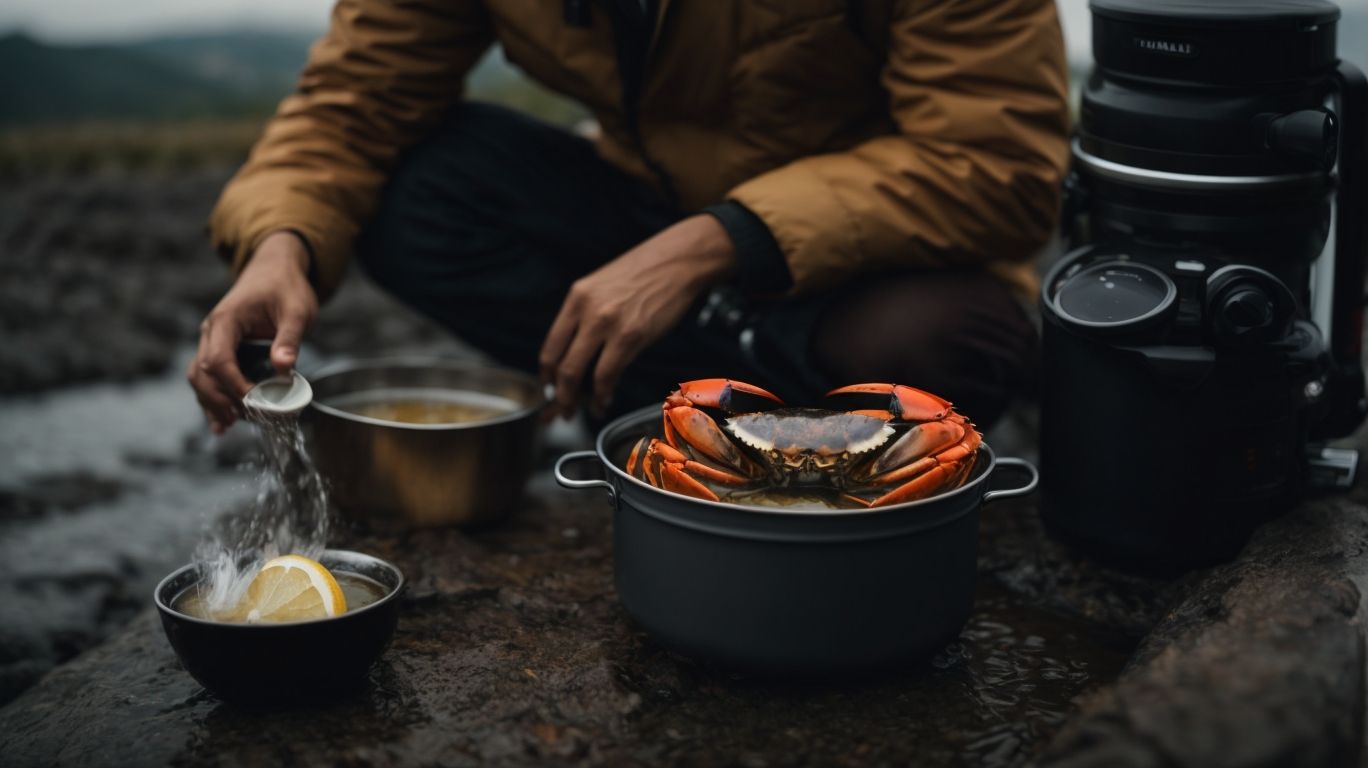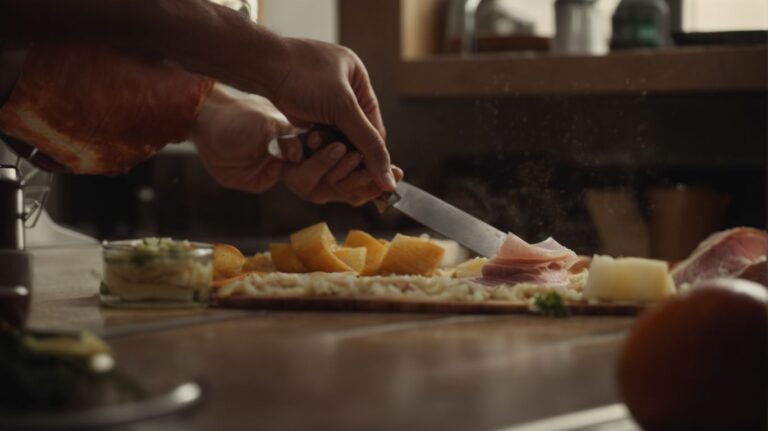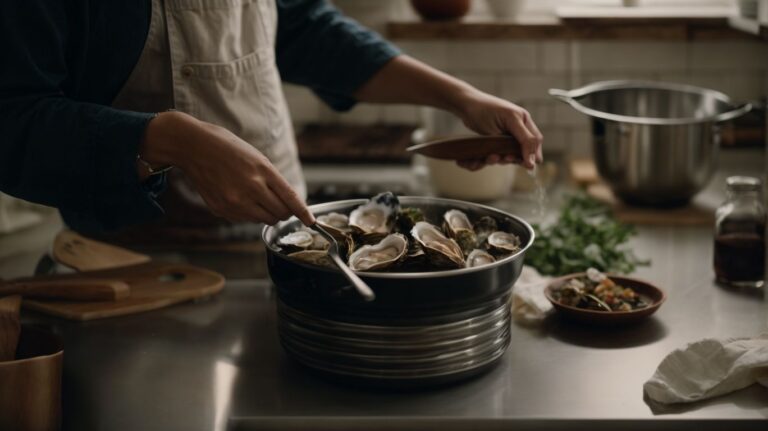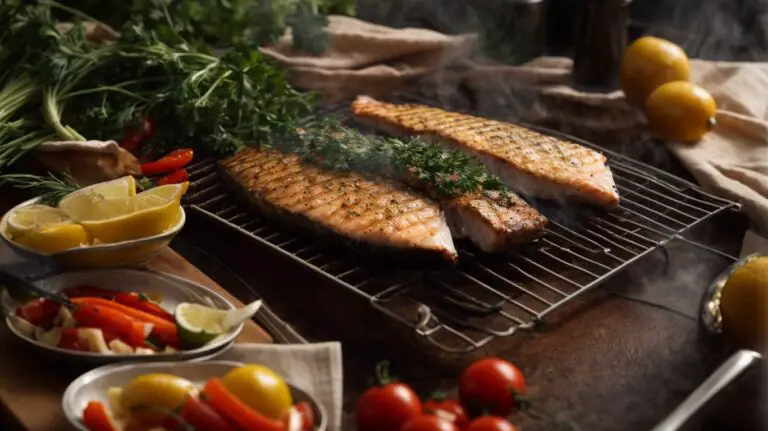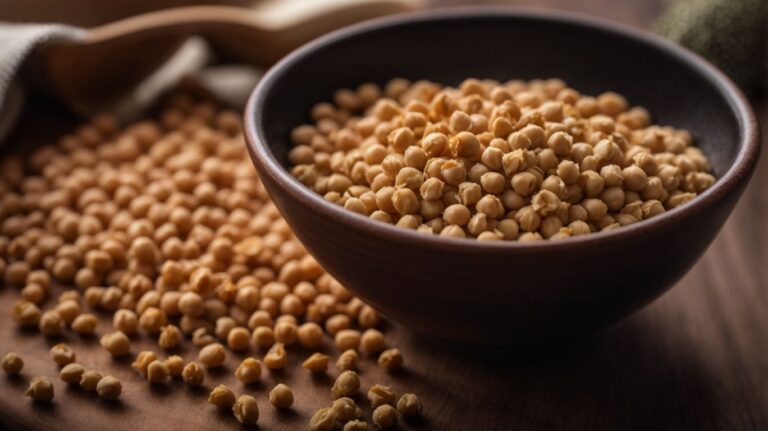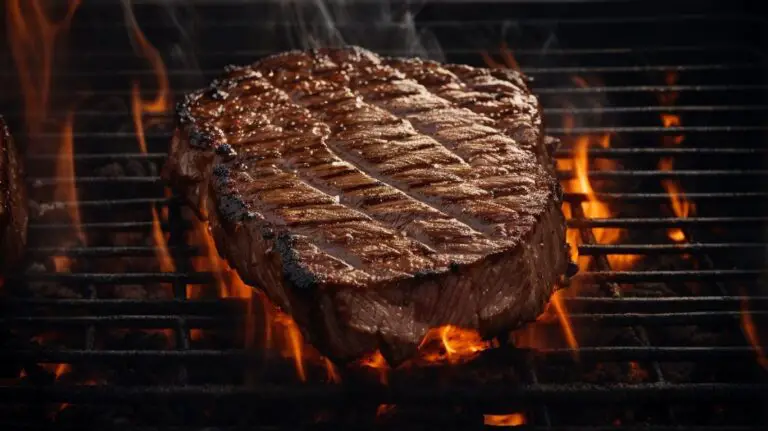How to Cook Crab After Catching?
Are you a seafood lover looking to elevate your culinary skills?
In this article, we will explore the art of cooking crab after catching it fresh.
From the importance of freshness and flavor to the various cooking methods and tips for serving, we will guide you through the process step by step.
Whether you prefer boiling, steaming, grilling, or baking, we have you covered.
Stay tuned to learn how to prepare and enjoy different types of crab like Blue, Dungeness, Snow, and King Crab!
Key Takeaways:
Why Cook Crab After Catching?
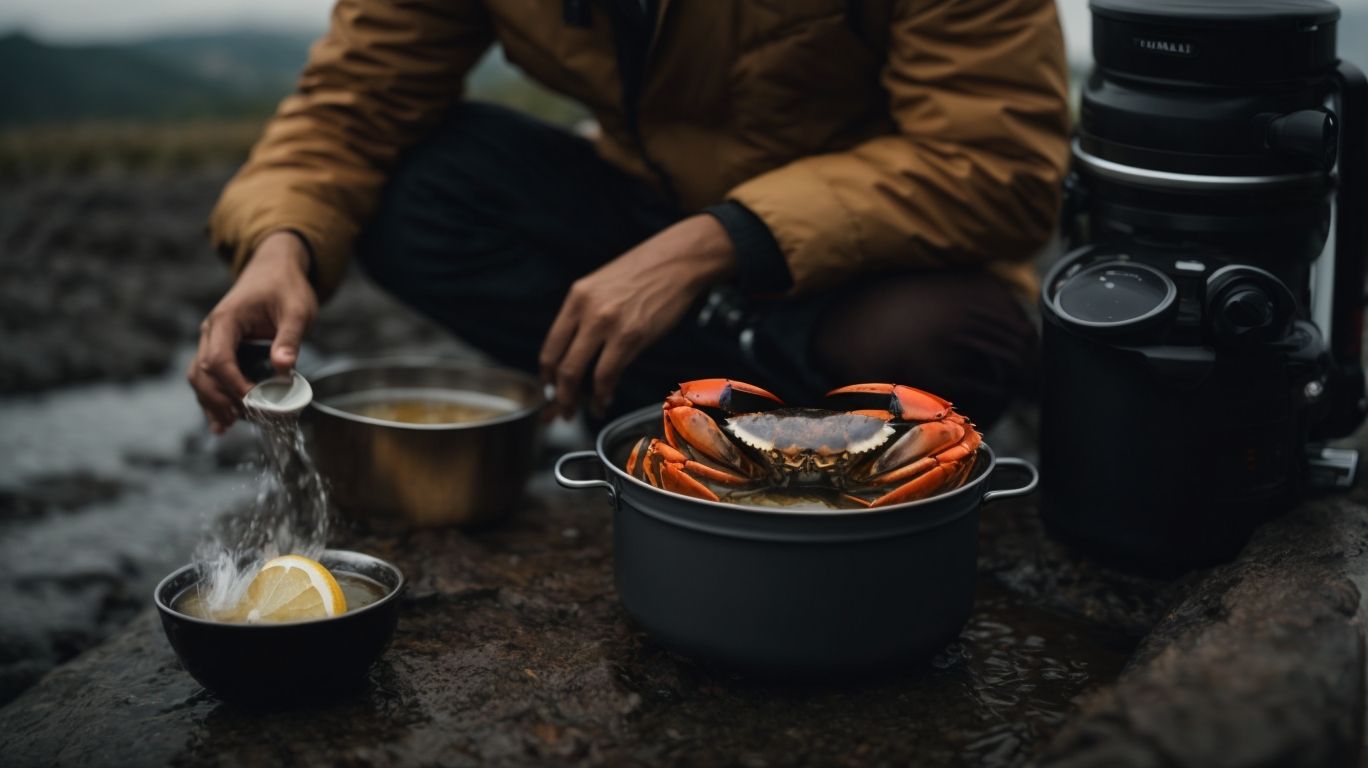
Credits: Poormet.Com – Lawrence Johnson
Cooking crab after catching it is essential to preserve its freshness and flavor while ensuring safety and health benefits for consumption.
When you cook crab immediately after catching it, you lock in the delicate sweetness of the meat that can be lost over time. The sooner you cook it, the more vibrant the flavors will be, making your dish truly delectable. Not only does immediate cooking enhance the taste, but it also ensures that you are consuming the freshest possible seafood available, reducing the risk of any potential foodborne illnesses. Fresh crab contains high levels of essential nutrients like omega-3 fatty acids, minerals, and vitamins that promote overall health and well-being.
Freshness and Flavor
The freshness and flavor of crabs, especially blue crabs and Dungeness crabs, are best preserved when cooked immediately after catching, allowing for a more enjoyable culinary experience.
When crabs are cooked fresh, their natural sweetness and delicate texture shine through, enhancing the overall taste of the dish. Blue crabs are prized for their tender and slightly sweet meat, while Dungeness crabs are known for their firm yet succulent flesh.
Cooking crabs promptly after harvest helps to lock in their vibrant flavors and prevent any decline in quality. The immediate cooking process ensures that the seafood is at its peak ripeness, resulting in a more satisfying meal for the consumer.
Safety and Health Benefits
Cooking crab post-catch not only enhances safety by eliminating potential risks of food poisoning but also offers various health benefits through properly cooked and prepared seafood.
When preparing crab, it is essential to ensure that it is cooked thoroughly to a safe internal temperature which helps destroy harmful bacteria, thus reducing the chances of foodborne illnesses. One crucial safety measure is to always handle raw crab with clean hands and separate it from other ingredients to prevent cross-contamination. Cooking crab in a clean environment with properly sanitized utensils is vital to prevent bacteria from spreading.
Preparation Before Cooking
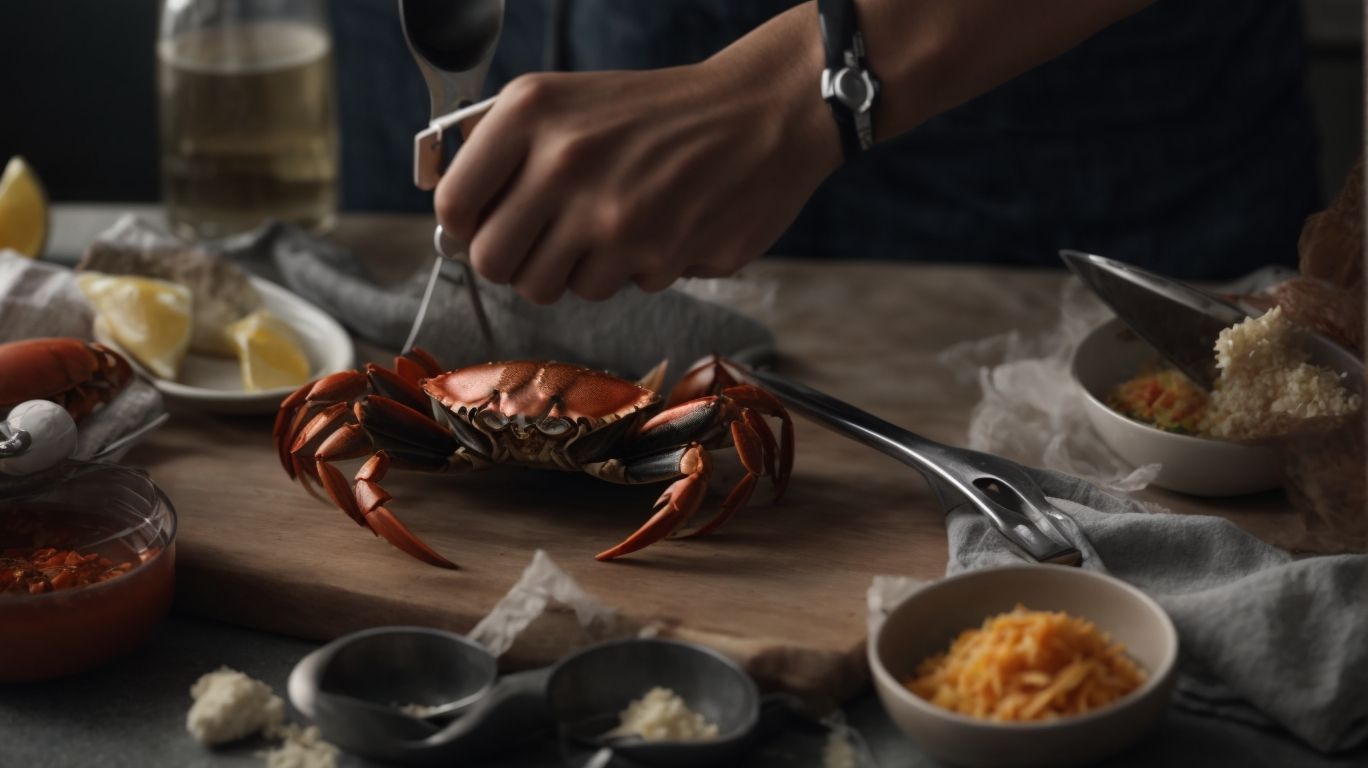
Credits: Poormet.Com – Anthony Williams
Proper preparation before cooking crab involves cleaning and handling the crab correctly as well as ensuring that the cooking equipment is ready for the task.
To clean the crab, start by removing the gills, stomach, and any other innards by gently pulling them out. Rinse the crab under cold water to remove any remaining debris. Next, handle the crab carefully, avoiding the sharp spikes on its shell, to prevent any injuries during the preparation process. Before starting to cook, ensure that your cooking equipment, such as a large pot for boiling or a grill for grilling, is clean and ready.
Cleaning and Handling the Crab
Cleaning and handling fresh crabs properly is crucial to maintain their quality and taste, with techniques such as vacuum sealing being effective for preserving freshness.
Regarding cleaning fresh crabs, start by rinsing them under cold water to remove any debris or dirt. Use a brush to gently scrub the shells, and be sure to remove the gills and viscera carefully. Once cleaned, consider vacuum sealing the crabs to extend their shelf life and prevent freezer burn.
Proper handling is also key; store the crabs in the coldest part of the refrigerator or freezer to maintain freshness. Avoid storing them near strong-smelling foods as crabs can easily absorb odors. Remember, the sooner you clean and preserve the crabs after purchase, the better they will taste when cooked.
Preparing Cooking Equipment
Before cooking crab, it is essential to prepare the cooking equipment, whether for boiling, steaming, or grilling, to ensure the desired cooking method is executed effectively.
For boiling crab, you will need a large pot with a fitted lid to ensure the crabs are completely submerged in the water. A pair of sturdy tongs or a slotted spoon can be handy for removing them once cooked. Ensuring that the pot is big enough to accommodate all the crabs without overcrowding is crucial to achieve even cooking.
Methods for Cooking Crab
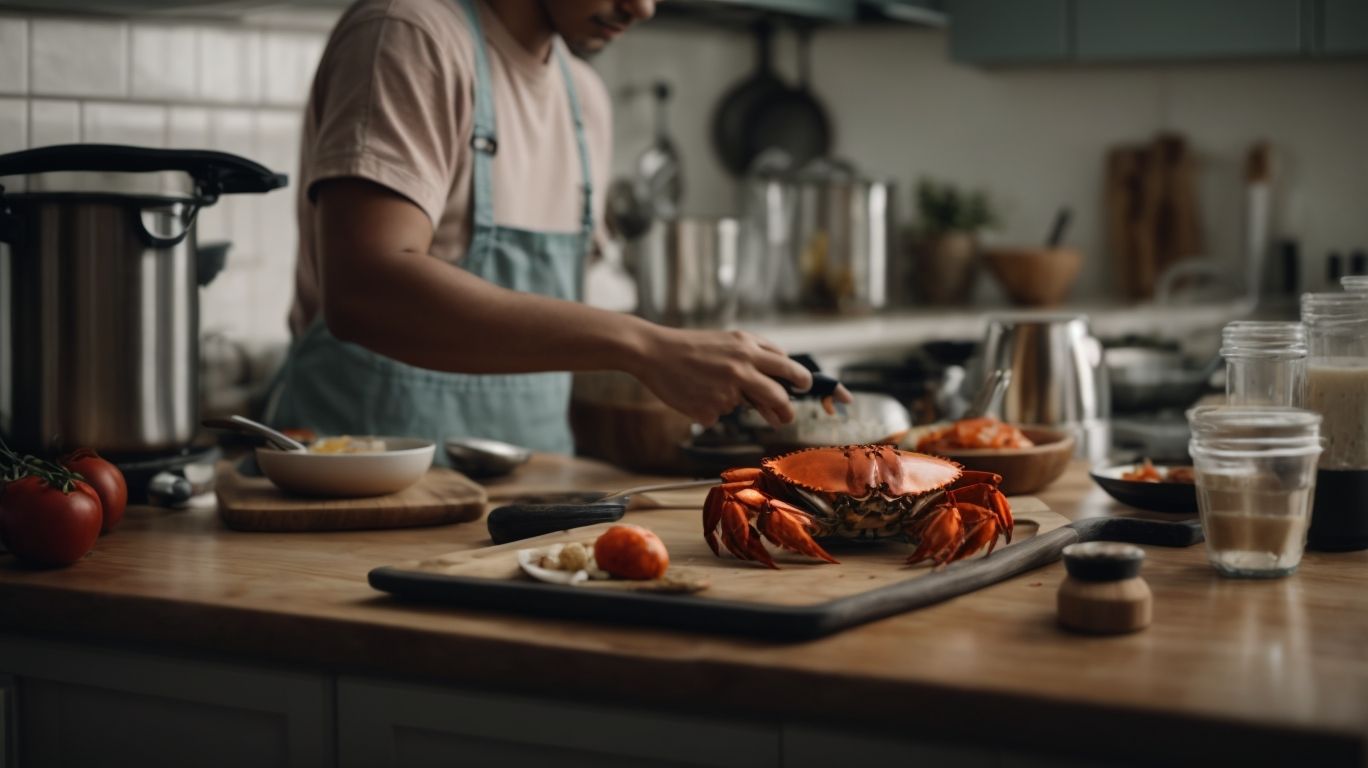
Credits: Poormet.Com – Adam Roberts
Crab can be cooked using various methods such as boiling, steaming, grilling, or baking, each technique imparting unique flavors and textures to the cooked crabs.
When boiling crab, it is essential to add seasonings or herbs to the water to enhance the taste of the meat. Steaming crab helps maintain the natural sweetness and juiciness of the crab, as it cooks gently in its own steam.
Grilling crab gives it a smoky flavor and charred aroma, perfect for those who enjoy a bit of a barbecue touch to their seafood. Baking crab is a great way to infuse flavors through marinades or sauces, creating a rich and aromatic dish.
Boiling
Boiling crab in seasoned water, especially blue crabs, is a popular method that ensures the meat is cooked to perfection, offering a delightful experience for crab lovers.
When preparing blue crabs, it’s crucial to clean them first to remove any debris or unwanted parts. Then, bring a large pot of water to a rolling boil, seasoned with aromatic spices like bay leaves, Old Bay seasoning, and salt. Once the water is flavored to your liking, carefully add the crabs, making sure they are submerged. Boiling time varies based on the crab’s size, typically ranging from 10 to 20 minutes. Overcooking can result in tough meat, so keep an eye on the timer. After boiling, allow the crabs to cool before cracking their shells to enjoy the succulent meat within.
Steaming
Steaming live Dungeness crab in salt water is a classic method that preserves the natural flavors and textures of the crab, offering a succulent and tender culinary delight.
By cooking the crab in salt water, you’re essentially infusing it with a subtle briny essence that enhances its taste. The gentle steam takes care of the delicate meat, ensuring it stays moist and juicy without getting rubbery. This method also helps in retaining the crab’s natural sweetness and juiciness, making each bite a delightful experience. The saltwater steam bath not only keeps the crab moist but also helps in maintaining its vibrant orange hue, adding to the visual appeal of the dish.
Grilling
Grilling freshly caught crab over an open flame imparts a smoky char and unique aroma, elevating the overall dining experience with a touch of outdoor cooking flavor.
Regarding grilling crab, the process requires finesse to ensure the delicate meat stays juicy and flavorful. The high heat of the open flame quickly caramelizes the outer layer of the crab while keeping the insides tender. This juxtaposition of textures adds complexity to each bite, creating a sensory explosion of flavors. The visual appeal of grill marks on the crab shell enhances the dish’s presentation, making it not only a treat for the taste buds but also for the eyes.
Baking
Baking cooked crabs in the oven, whether fresh or frozen, offers a convenient method of preparation that results in tender, flavorful crab meat perfect for various culinary dishes.
By using the oven, you can ensure a more even cooking process, allowing the flavors to seep into every inch of the crab meat. This method also helps retain the natural juices of the crab, keeping it moist and succulent. Oven baking eliminates the need for constant monitoring, giving you the freedom to prepare other components of your meal while the crabs are baking.
How to Know When the Crab is Cooked?
Determining when a crab is cooked involves various methods such as the smell test, visual cues, and ensuring that the crab is no longer alive, ensuring a safe and enjoyable dining experience.
When cooking a crab, the smell test is a crucial step in determining its readiness. A properly cooked crab will emit a distinctive sweet and briny aroma, indicating that its natural flavors have developed fully. Alongside this olfactory check, visually inspect the crab’s shell, which should display a vibrant and uniform color, typically shifting to a bright orange or red hue depending on the species. The tell-tale sign of a cooked crab is making sure it is no longer moving or showing any signs of life, ensuring that it is safe to consume.
Tips for Cooking Different Types of Crab
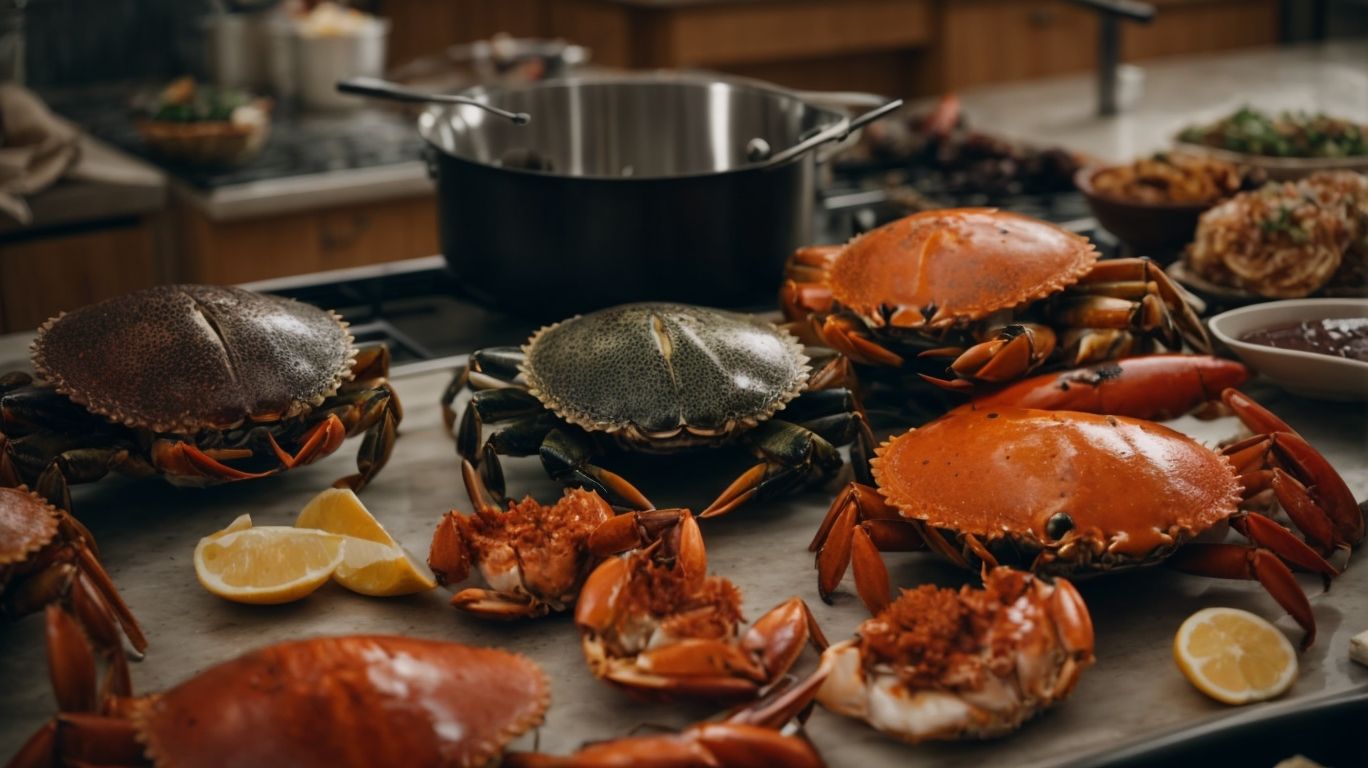
Credits: Poormet.Com – David Johnson
Cooking different types of crab, such as Blue Crab, Dungeness Crab, Snow Crab, and King Crab, requires specific techniques and considerations to enhance the flavor and texture of each variety.
Blue Crab, known for its sweet and succulent meat, is best enjoyed steamed or boiled with Old Bay seasoning to bring out its delicate flavor.
Dungeness Crab, with its rich and buttery taste, is perfect for crab cakes or simply steamed and served with melted butter and lemon.
Snow Crab, prized for its delicate texture and sweet flavor, can be quickly steamed or grilled with garlic butter for a mouthwatering experience.
King Crab, with its firm and sweet flesh, pairs well with a simple lemon butter sauce or can be lightly grilled with herbs for a savory twist.
Blue Crab
Cooking Blue Crab, a popular variety often found in Chesapeake Bay, with a dash of Old Bay seasoning ensures a flavorful and delightful dining experience, especially when paired with succulent crab legs.
To begin the cooking process, start by preparing a large pot of water and bringing it to a rapid boil. Meanwhile, ensure your blue crabs are cleaned and ready for cooking. Once the water is boiling, add in the Old Bay seasoning to infuse the broth with its signature blend of flavors, reminiscent of the Chesapeake Bay region. Carefully submerge the crabs in the boiling water, allowing them to cook for about 10-15 minutes until they turn a vibrant red color.
Once the crabs are cooked, carefully remove them from the pot using tongs and let them cool slightly before cracking open the shells to access the delectable meat inside. Don’t forget to season the crab legs with a bit more Old Bay seasoning for that extra kick of flavor. Serve your cooked blue crab and crab legs hot, accompanied by melted butter and lemon wedges for a truly satisfying seafood feast.
Dungeness Crab
Dungeness Crab, sourced from the Pacific Ocean, can be elevated with a touch of crab butter and Anne’s homemade version, creating a rich, indulgent culinary experience for seafood enthusiasts.
When preparing Dungeness Crab, it’s essential to handle it delicately to preserve the delicate sweetness of its meat. Anne’s homemade crab butter, infused with a blend of garlic, lemon zest, and parsley, adds a unique depth of flavor. This luxurious ingredient complements the natural sweetness of the crab meat perfectly.
To achieve the perfect balance of flavors, seasoning choices like Old Bay, smoked paprika, and a sprinkle of fresh herbs can further enhance the dish’s aromatic profile. Whether you choose to steam, boil, or grill the crab, the key is to keep the preparation simple to let the crab’s natural flavors shine.
Snow Crab
Snow Crab, known for its succulent legs and delicate meat, can be expertly prepared using traditional methods from MissourI and Phila,Pa, ensuring a delightful seafood experience.
If you want to bring out the best flavors of Snow Crab legs, consider steaming them to perfection. Steaming helps preserve the delicate texture and natural sweetness of the meat.
In Missouri, locals often steam Snow Crab legs with a hint of Old Bay seasoning for that extra zing. On the other hand, Phila,Pa chefs prefer a more minimalist approach, simply steaming the legs with a touch of lemon and butter. Both techniques highlight the essence of Snow Crab without overwhelming its naturally delicious taste.
King Crab
King Crab, sourced from Reno, NV, boasts robust and flavorful legs that are ideal for grilling, offering a smoky char and delectable taste that appeals to seafood aficionados.
When preparing King Crab, one must pay attention to the delicate flavors and textures of its meat. Grilling this delicacy enhances its natural sweetness while providing a slightly charred exterior that adds depth to each mouthful. The meat’s succulent nature lends itself perfectly to grilling, as it maintains moisture and tenderness throughout the cooking process.
Originating from the cold waters of Alaska and the North Pacific, King Crab has taken culinary circles by storm due to its rich, buttery flavor and firm texture. Reno, NV, has become synonymous with top-quality King Crab, drawing seafood lovers from far and wide to experience its decadent taste.
Serving and Enjoying Your Cooked Crab
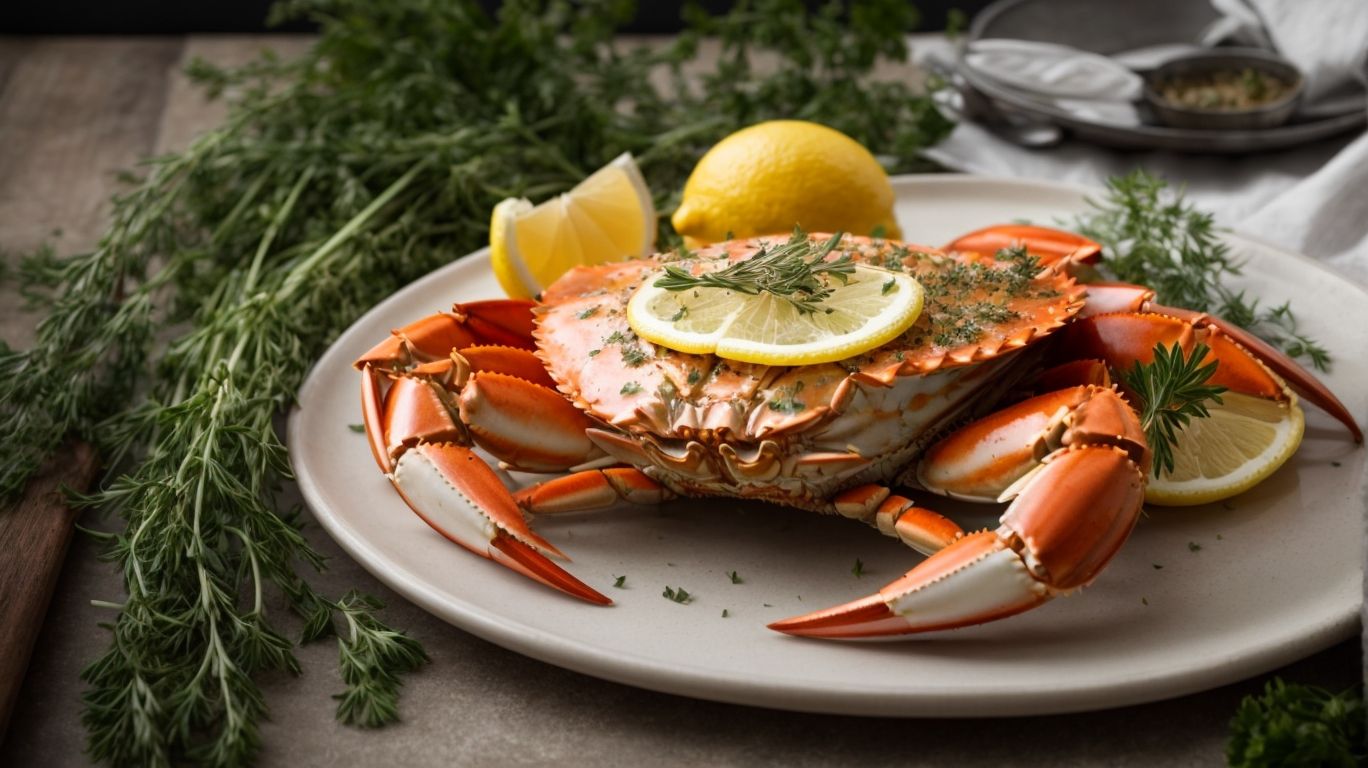
Credits: Poormet.Com – Justin Robinson
Serving and enjoying your cooked crab involves pairing it with complementary dishes and sauces to enhance the overall dining experience, creating a memorable culinary delight.
One popular pairing for cooked crab is with a zesty lemon butter sauce that adds a burst of citrusy freshness to the delicate crab meat. The rich and creamy texture of the crab can also be balanced with a light, refreshing salad dressed with a tangy vinaigrette. For a more indulgent experience, consider serving the crab alongside a decadent garlic aioli or a spicy chili sauce to elevate the flavors and provide a kick of heat. Serving the crab with freshly baked crusty bread or a side of fluffy risotto can complement the dish and create a satisfying meal.
Tips for Serving Crab
When serving crab, remember to refrigerate any leftovers promptly and conduct a quick smell test to ensure freshness and safety for subsequent consumption, maintaining the integrity of the dish.
Proper storage is key to preserving the delicate flavors of crab. After enjoying your meal, promptly refrigerate any leftover crab meat, ideally within two hours of cooking. Store it in an airtight container to prevent contamination and maintain freshness. This will help prevent bacterial growth and maintain the quality of the crab meat for future servings.
Before consuming any leftover crab, always conduct a simple smell test. Fresh crab should have a mild sea-like aroma; if the scent is overly fishy or sour, it may be a sign of spoilage. Trusting your sense of smell is a crucial step in ensuring the safety and palatability of the dish.
Pairing Crab with Different Dishes and Sauces
Pairing crab with a variety of dishes and sauces offers a versatile dining experience, allowing you to explore different flavor combinations and culinary traditions with this beloved seafood delicacy.
Regarding choosing the perfect accompaniments for crab, consider the rich buttery goodness of garlic butter sauce for a classic indulgence. Alternatively, you can opt for a zesty citrus marinade to add a refreshing twist to the sweet and delicate taste of crab meat. For those who enjoy a hint of heat, a spicy Thai chili sauce could be just the thing to elevate the flavors. The beauty of pairing crab lies in the endless possibilities, whether you prefer traditional pairings or daring fusion experiments.
Frequently Asked Questions
What’s the best way to cook crab after catching?
The best way to cook crab after catching is to steam them. This method preserves the delicate and sweet flavor of the crab meat while also making it easier to remove from the shell.
Can I cook crab after catching without steaming?
Yes, you can also boil or grill crab after catching it. However, steaming is the preferred method as it produces the best results in terms of flavor and texture.
How long should I steam crab after catching?
The cooking time for steaming crab after catching will depend on the size of the crab. Generally, it takes about 12-15 minutes for medium-sized crabs, and 20-25 minutes for larger crabs.
Do I need to clean the crab before cooking it?
Yes, it is important to clean the crab before cooking it. This involves removing the gills and rinsing the crab thoroughly. This helps to remove any impurities and ensures a better-tasting dish.
What seasonings should I use when cooking crab after catching?
The best seasonings to use when cooking crab after catching are Old Bay seasoning, garlic, and lemon. You can also add other herbs and spices to your liking for a more flavorful dish.
Can I freeze crab after catching and cook it at a later time?
Yes, you can freeze crab after catching and cook it at a later time. Make sure to clean and cook the crab before freezing it, and thaw it completely before cooking. However, the overall taste and texture may not be as good as cooking it fresh.

